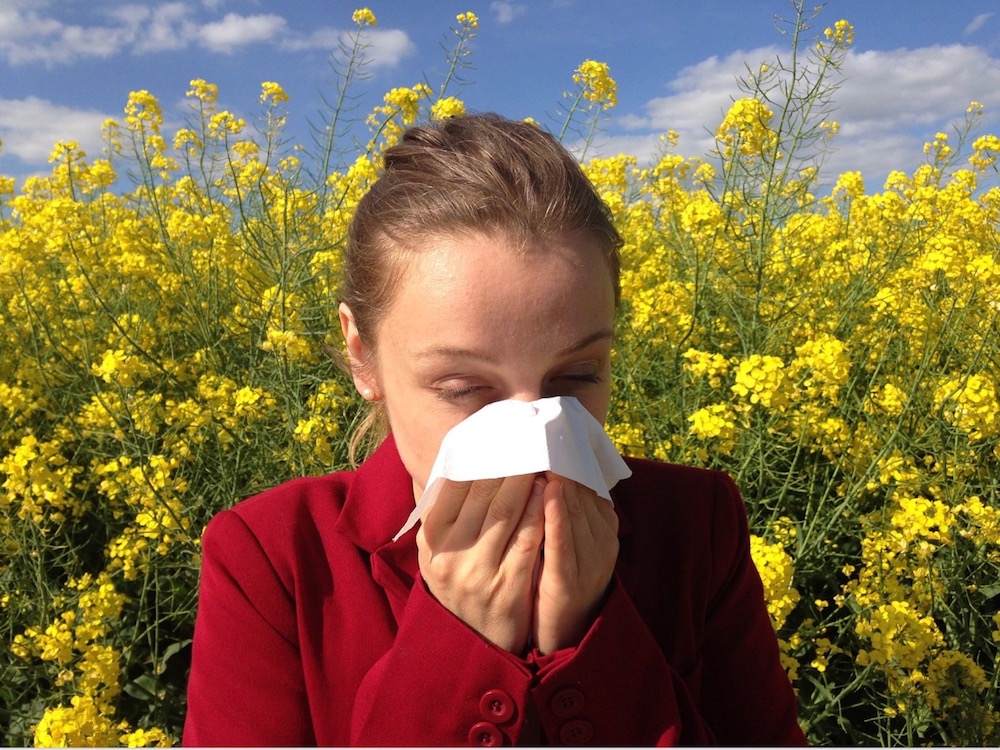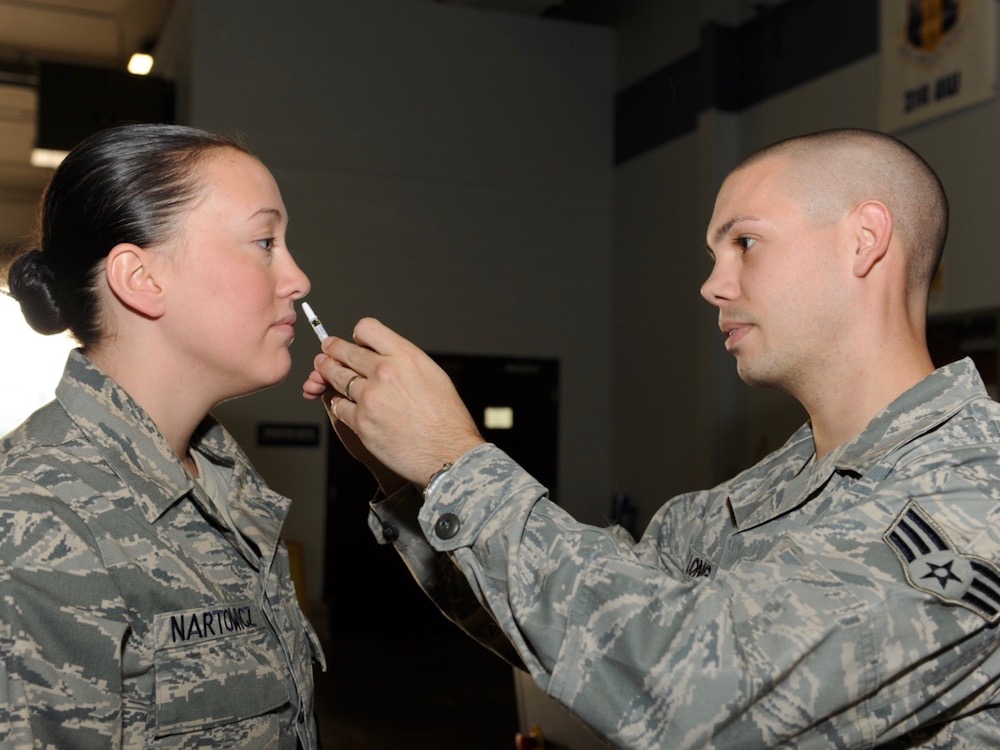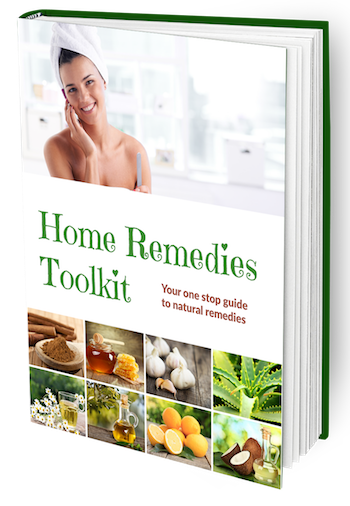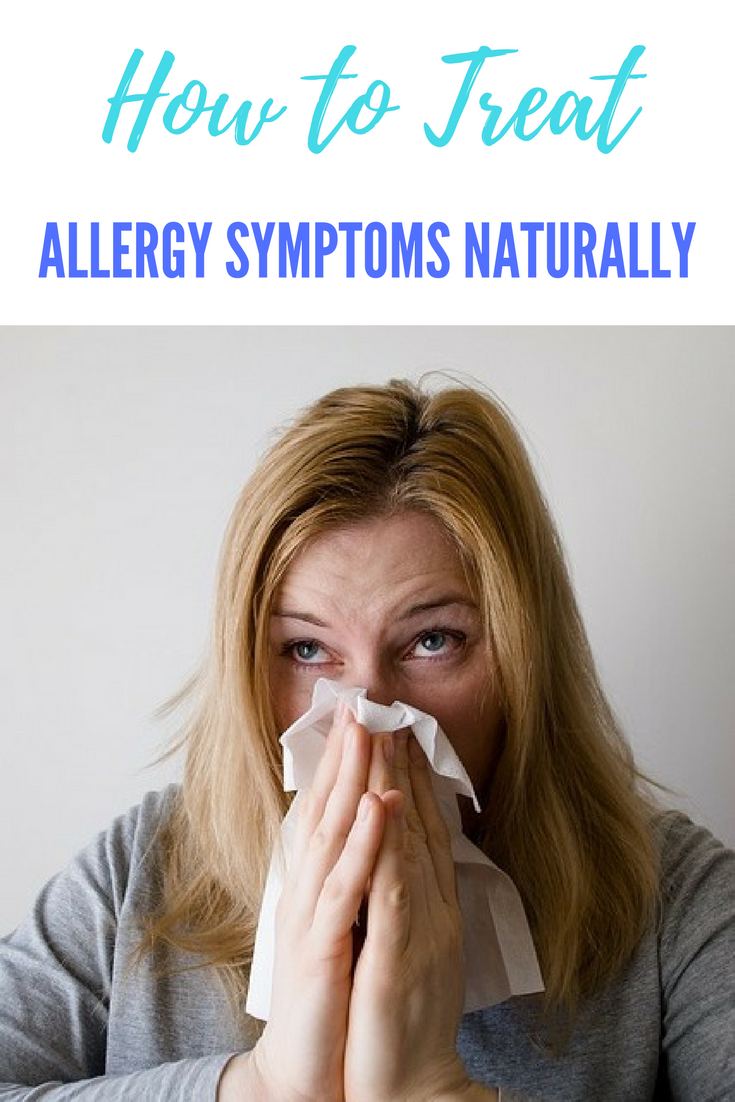
Seasonal allergies can make you dread each passing season no matter how beautiful the scenery or fun the activities are that go along with it.
It particularly can be troubling when you and your partner do not align during your “worst times of the year.”
Perhaps only behind money and cheating, it can drive a major wedge into relationships especially when you are wanting to pick daisies but your significant other needs a Hazmat suit just to join in.
How do these awful maladies arise, in what ways do they affect us, and what can we do about them? Keep reading, and we will address each of these questions.
Allergies in Adults vs. Allergies in Children
Adults are not immune from first-time allergies, and seasonal allergies can be major causes of such conditions.
According to Dr. Richard Weber, president of the American College of Allergy, Asthma, and Immunology, “Although allergies are most common in childhood, they can strike at any age in life. Sometimes allergies go away, but can return several years later.”
Adult on-set allergies can occur “when your immune system mistakenly identifies a substance such as pollen, mold, animal dander, or food as harmful,” EH adds.
The ways these allergens interact with your immune system is key.
Similarly, children are undergoing various changes in their immune systems. But these changes typically occur at a more rapid pace because children grow much faster than adults.
Whichever side of the age spectrum you are on, it is important to make note of symptoms as they manifest.
So just how do you know what you are experiencing is an allergic reaction? Let’s look at some of the most common allergy symptoms.
Seasonal Allergy Symptoms
Whether you are an adult sufferer or the parent of a child experiencing allergy problems, you will want to discuss the situation with your doctor for a final determination once you make note of any of the following symptoms that may be occurring:
Rashes: A rash can occur for a number of reasons — athlete’s foot, hives, poison ivy, eczema — and they can originate from fungi, bacteria, viruses, or parasites.
Since environment is a key driver of seasonal allergies, any of these conditions could be considered a “seasonal allergy.”
Swelling: An allergic reaction that results in swelling can be anywhere from mild to life-threatening depending on whether it affects the lips or the lungs. It also ties into our next symptom.
Asthma: Depending on the severity of the allergy, you could experience swelling in the throat that extends to the lungs and causes severe asthmatic reactions is a life-threatening condition called anaphylaxis.
This is common among children who suffer from peanut allergies.
Sinus: Your sinus cavities are common sources of frustration when it comes to allergies. The face holds four sinuses altogether: the maxillary (inside the cheekbones), frontal (low center of forehead), ethmoid (between the eyes), and sphenoid (in the bones behind the nose).
When allergens increase or thicken mucus production, a number of things can go wrong — ear infections, itchy/runny eyes, runny nose, sneezing, coughing, and sore throat.
If you do suffer from any of these conditions, you are in pretty good company. Of the 320 million people currently living in the United States, about 50 million suffer from some form of allergy, and that number continues to grow amid increasing population sizes and environmental changes.
But before you assume the problem is seasonal allergies, it is important to note that symptoms can run concurrent to some very different ailments — particularly influenza and the common cold.

Seasonal Allergies vs. Cold vs. Flu
According to the Dr. Teresa Hauguel of the National Institute of Health (NIH), there are subtle but significant variances that will allow you to know the differences between cold, flu, and allergies.
Hauguel says that it is vital to know the difference because “if you know what you have, you won’t take medications that you don’t need, that aren’t effective, or that might even make your symptoms worse.”
Hauguel says that colds and flu are caused by different viruses, and as a general rule of thumb, “the symptoms associated with the flu are more severe.”
She continued: “Both illnesses can lead to a runny, stuffy nose; congestion; cough; and sore throat. But the flu can also cause high fever that lasts for 3-4 days, along with a headache, fatigue, and general aches and pain.
These symptoms are less common when you have a cold.”
As for allergies, the cause is not a virus but — as previously mentioned — your body’s immune system “reacting to a trigger, or allergen, which is something you’re allergic to.”
Whichever condition you are suffering from, the focus when addressing should be on whatever actions you can take to boost support for the immune system.
Seasonal Allergies and Hay Fever: What’s the Difference?
Hay Fever is a condition otherwise known as allergic rhinitis. It can be a seasonal allergy, but it does not have to be.
That’s because the conditions that it causes — itchy, watery, runny eyes and nose — can be caused by both seasonal (pollen) or perennial (house dust) sources.
While your only fix for the seasonal component will be to limit time outside or wear one of those creepy face masks while mowing the yard, grilling, playing with the kids, etc., the perennial component could be addressed by fumigating your home for cockroaches and other insects, changing out your air filter every month, and keeping rooms properly humidified.

Pet allergies can be a big driver of indoor allergies, but seasonal changes can affect them.
Seasonal Allergies vs. Pet Allergies
Pet allergies are worth mentioning when discussing seasonal allergies, though they are two distinct concerns. That’s because your pet’s fur or dander — the common causes of pet allergies — can be more severe during certain times of the year.
So while you are not actually experiencing a seasonal allergy thanks to Fido’s shedding, you are certainly controlled by the severity of it depending on what the seasons are doing to your fur buddy’s coat.
The best ways to address pet allergies:
Do your research and due diligence before acquiring a pet to ensure that you aren’t susceptible.
If that option is not on the table, then you may want to rethink getting a pet or get rid of the one you have (yeah, right).
The only other option is to police your pet’s shedding very carefully and limit the time you spend giving out smooches. Wash your hands thoroughly after direct contact.
Keep a lint roller handy at all times. Vacuum, vacuum, vacuum. Get a humidifier/dehumidifier, depending on room conditions.
Allergens by Season
Now that we’ve covered some of the related allergies that may or may not be directly influenced by times of year, let’s get down to business with seasonal allergies themselves.
What are the most common allergens for each portion of the year, how does geography influence them, and why on Earth were they put here other than to torment us? Let’s have a look.
Springtime Allergies
Spring will differ depending on which part of the country (or world) that you live in. The typical “start time” for spring allergies is February, and they can overlap with summer allergies, so if we end up repeating ourselves a bit, bear with us.
The earliest allergen to arrive is tree pollen, which gives rise to grass pollen. Neither are good if you suffer from seasonal allergies, but they do serve a purpose.
For example, bee pollens are rich in proteins, free amino acids, and vitamins, including B-complex and folic acid, so they are highly nutritious.
Also, without pollen in general, the male part of the plant could not fertilize the female, hence making this planet a pretty crappy place to be.
So before you curse pollen over your next sneezing fit, keep that in mind.
Summer Allergies
Spring allergies often get the most attention from allergy sufferers. It’s understandable. Most pollination occurs during this time — though some pollen can still be present during the summer months, too — but the summertime actually is the time of year where you have more to worry about if you are among them.
Your potential allergens during this season far exceed the one albeit powerful allergen of the springtime.
Weeds and grasses top the website’s list, and these include the following:
- Ragweed
- Cockleweed
- Pigweed
- Russian thistle (weed)
- Sagebrush (weed)
- Tumbleweed
- And grasses that include Bermuda, Blue grasses, Orchard, Red top, Sweet vernal, and Timothy.
Ragweed “can travel for hundreds of miles on the wind,” the site notes, adding that “even if it doesn’t grow where you live, it can make you feel bad if you’re allergic to it.”
Beyond the naturally occurring allergens connected to season, summer also is a bad time for smog, which can have a crushing effect as temperatures increase. Insects and microscopic organisms are more prevalent as well.
Of course, most everything but the smog serves a purpose of some kind. Common offender ragweed, for example, can be used as a fever reducer and as an antiseptic among other purposes.
Fall Allergies
Pardon the overlap here, but fall allergies are largely culled from the aforementioned ragweed, but as production and transferrence slow down closer to winter, another allergen starts to take hold — mold spores.
Mold spores are almost weightless, microscopic, and easily inhalable, affecting the lungs.
Mold sounds like something out of a horror movie, but like other allergens discussed in this piece, they don’t have an effect on everyone.
Still, if you are susceptible, the Center for Disease Control (CDC) notes, you will experience “nasal stuffiness, throat irritation, coughing or wheezing, eye irritation, or, in some cases, skin irritation.”
What good does mold do? For starters, it is a terrific recycler, particularly involving dead things, taking dead substances and putting them back into the ecosystem.
Mold, for example, can reuse a dead tree as soil. The mushroom is a form of mold as well, and it’s delicious. Molds also are vital in the creation of antibiotics such as penicillin, which made huge advancements in medicine/healthcare.
Winter Allergies
Circling back to perennial allergens like dust mites as well as pet allergens such as dander, winter can proliferate these issues. And since colder temperatures usually mean more time indoors, you could find yourself suffering from allergies as much in the winter as the spring or summer.
Mold also can carry over from the fall, further complicating your efforts to get a good night’s sleep or just a nice, deep breath.

Many swear by allergy shots, but like a lot of different treatments, results vary.
What Can Help With Seasonal Allergies?
While we’ve already mentioned some tips and tricks to protect yourself against allergies, we haven’t really discussed what to do when all of that fails.
(And yes, for many of you, it will.)
Fortunately, there are a number of solutions out there to consider: shots, prescriptions, over-the-counter drugs, organic solutions, home remedies, and even lifestyle changes.
Let’s spend some time with each one to see how it can make an impact.
Do Allergy Shots Really Work?
According to WebMD, allergy shots are particularly effective when dealing with allergic rhinitis (aka Hay Fever) and allergic asthma (aka anaphylaxis). Considering the underlying factors behind both of those ailments, shots are effective tools in being able to tackle seasonal allergies.
However, no one is quite sure how long it takes for a shot to wear off, so this approach is one that will require multiple follow-ups, and that could get costly.
Just for a little more guidance, the American Academy of Allergy, Asthma, and Immunology, observes that allergy shots may take as much as 12 months to notice a difference, and maintenance treatments continue for three to five years.
The shots are especially effective at addressing reactions to and caused by pollens, animal dander, dust mites, mold, and cockroaches.
If needles don’t bother you too much, this is a viable option. For the rest of us, here are some additional (potential) solutions.
Home Remedies
A quick Internet search can give you some pretty solid ideas for things to try that have limited downside. Among our favorites: probiotics from soil-based organisms (SBOs).
That’s because the gut dictates so much of how our immune system operates. A healthy gut means a healthy immune system that is better prepared to fight triggering allergens.
Organic or Natural Solutions
Much of what ails us is found in nature, but luckily so is much of what cures us. Alternative medicines (aka homeopathy) harness the power of nature to address many of the most common allergic reactions.
While this might sound a little like hocus pocus on the surface, one example to set your mind at ease: Allium cepa, or onions as they are more commonly known, can help regulate nasal mucus production, thus easing up allergic reactions on your sinus cavities that are brought on by pollen and ragweed.
For those of you who are believers in the use of natural oils, you might consider five drops of Peppermint (the best) or lavender, eucalyptus, Roman chamomile, frankincense, or lemon into a diffuser.
Lifestyle Changes to Affect Allergies
If you suffer from a compromised immune system of any kind or other conditions such as COPD/respiratory-related ailments, then it is vital that you control seasonal allergies with positive lifestyle choices.
Start by examining your levels of activity. The less active you are, the more susceptible you become to poor health. But if the allergens that affect you are waiting outside, how do you maintain activity levels?
Suggestion #1: Purchase an in-home Elliptical, Gazelle, or Treadmill, and use it regularly. If you can’t afford the addition, then simply run in place with a pedometer of some kind (phone-based or otherwise) attached to your person.
You may feel silly doing it, but it absolutely works, says the guy who used it to help himself drop 40 pounds in a little over a year. That said, you probably shouldn’t let anyone see you do it, or much jeering there will be!
Suggestion #2: Consider an affordable gym membership. Places like Planet Fitness charge just $10 per month, offer 24/7 availability, and only ask a small yearly registration fee (something like $35 or $40 as of this posting). Oh yeah, and after you purchase, don’t forget to use it!
Suggestion #3: Game-ify your activity levels with a FitBit or similar fitness tracker.
Suggestion #4: Count calories. If you are like millions of Americans, much of your poor lifestyle choices result from simply eating too much.
Not tracking your calories will put you on the fast track to overeating, and when you are exceeding allowable calories each day — even by a little bit — the extra pounds sneak up on you. Before you start eating right, figure out WHAT you are eating in the first place.
Suggestion #5: Start thinking more closely about what you eat. Once you have calories under control, take a closer look at what types of foods you are consuming.
There could be some food allergens lurking in there that you are either severely allergic to, or allergic enough to that they mix with other allergens to produce a more severe reaction during the season that most affects you.
Foods to watch out for include chocolate, peanuts, wheat/gluten, soy, shellfish, sunflower seeds, sugar, and artificial sweeteners. Del-Immune V has a more comprehensive list at this link as well as a list of some foods that play nicely with your immune system during allergy season.
Suggestion #6: Take proper precautions when you have to be around allergens. For example, if you are susceptible to common seasonal allergies like pollen and ragweed, then do not attempt to mow the yard without wearing a face mask.
Also, spend less time outside during the seasons that are the worst irritators. Last but not least, consider prescriptions and over-the-counter medications to help guide you through the season, particularly during those times when you are going to be most susceptible to allergens. And this final suggestion brings us to the last section.
Allergies, Prescriptions, and Over-the-Counter Drugs
We know there are several of you who are naturally uncomfortable about medication dependency. The opioid epidemic is a painful reminder of just how much damage prescriptions and OTC’s can do.
But if used responsibly, prescriptions and OTCs can be game-changers for your quality of life during allergy seasons.
Some of the most common OTC meds used to address allergies are antihistamines like Zyrtec, Allegra, Xyzal, Claritin, Dimetapp, Tavist, Chlor-Trimeton, and Benadryl; decongestants like Zyrtec-D, Allegra-D, and Claritin-D; steroids like Rhinocort Allergy; mast cell stabilizers like Opticrom and Alomide; leukotriene modifiers (Singulair is the only one FDA-approved); and nasal sprays/artificial tears.
Which works best will vary depending on the person taking it and the symptoms they are addressing, but therein lies the big takeaway about prescriptions and OTCs — they only address the symptoms.
They do nothing to protect you from experiencing allergic reactions and complications from the outset.
For that, we highly recommend you pay closer attention to the Lifestyle Changes part of this article and think of medications only when you experience the symptoms or when you anticipate being in an environment where exposure to allergens is inescapable.
In Closing
Seasonal allergies can make you feel as if your life has shut down for three months at a time, and considering that many of the culprits behind those seasonal allergies cross over, you could find yourself wrestling with the problem 6-9 months or even year-round.
The more you educate yourself on what is causing your seasonal allergies to occur, the easier it will be to find meaningful actions you can take to stave off the effects or address symptoms in a quicker and more effective manner.
Don’t let it take away from the experiences that you are open to and the relationships that can be built around them.
Want More Natural Products You Can Use Around Your Home?
 Then get yourself a copy of the Home Remedies Toolkit downloadable guide with 215+ DIY recipes for making your own natural health and beauty products and non-toxic cleaning supplies. Each recipe is beautifully presented with stunning photography and will save you a fortune as you discover how to stop buying toxic products for your home, health and beauty regime and instead replace with better, greener and cheaper alternatives. Get your copy here.
Then get yourself a copy of the Home Remedies Toolkit downloadable guide with 215+ DIY recipes for making your own natural health and beauty products and non-toxic cleaning supplies. Each recipe is beautifully presented with stunning photography and will save you a fortune as you discover how to stop buying toxic products for your home, health and beauty regime and instead replace with better, greener and cheaper alternatives. Get your copy here.
Share Image on Pinterest

Leave a Reply